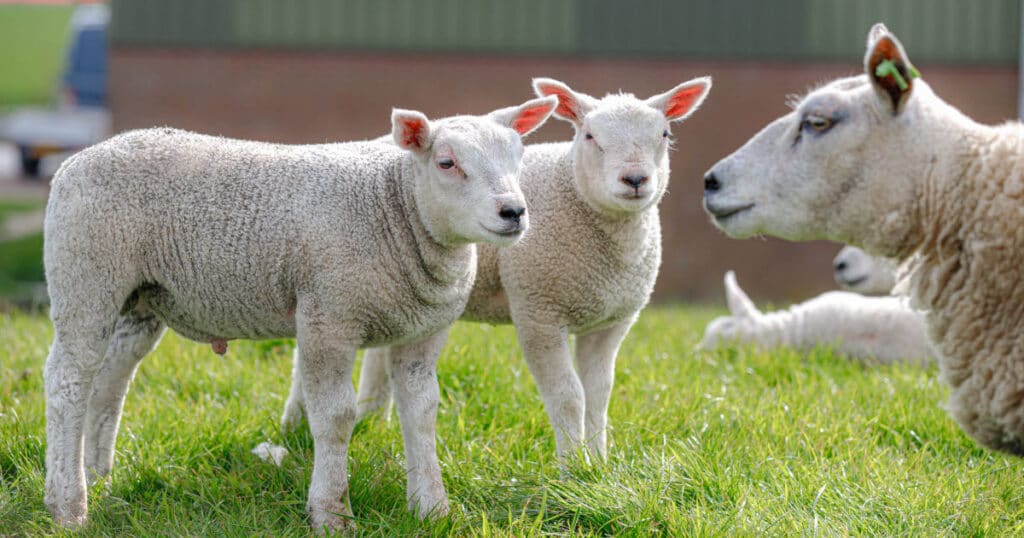Sheep mature quickly. Many new farmers wonder when to separate ram lambs from ewes to prevent accidental breeding. In this article, I will go over all the information you need to know on the subject, including when ram and ewe lambs reach sexual maturity, when ewes resume estrus after giving birth to their lambs, and some other pertinent information.
By the end of the article you’ll be able to determine when you should separate ram lambs and ewes on your farm.
Let’s get started!
When do Ram Lambs Reach Sexual Maturity
It’s important to know when male (ram) lambs reach sexual maturity and are able to (and interested in) breeding.
A male lamb’s reproductive organs become functional occurs at puberty. Their secondary sex characteristics also appear during that time. At that point, the ram will be able to mate with ewes.
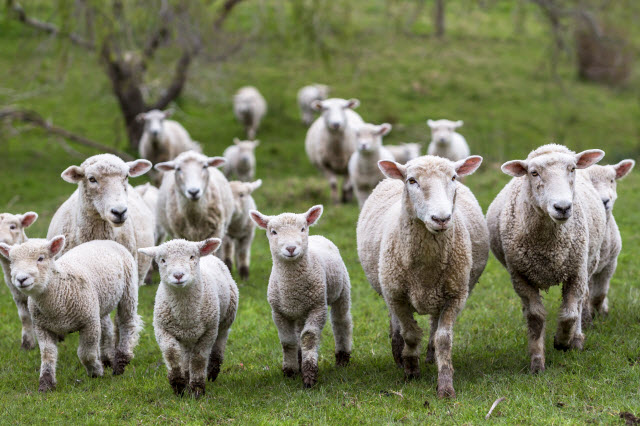
Ram lambs usually reach puberty between 5 and 7 months. They will generally be between 50 and 60 percent what their mature weight will be at that age. Genetics, the breed of sheep, and nutrition will determine when puberty occurs.
If a ram lamb has poor nutrition, it may not get to puberty until it’s as old as a year old. Different breeds reach maturity at different times. Look into what the common time for puberty is for male lambs in the breed that you have. If you have lambs from a breed usually used for meat, the ram lambs will probably get to puberty earlier than they would if they were from a wool breed.
When Do Ewes Reach Sexual Maturity
Ewe lambs reach maturity when they get to puberty. This means they will start to experience estrus (also known as heat). The age at which an ewe will get to puberty will depend on factors such as genetics, breed, and size (the lamb’s weight).
Nutrition and the season in which the ewe is born are also factors. The average age range in which ewes reach puberty is between 5 months and one year.
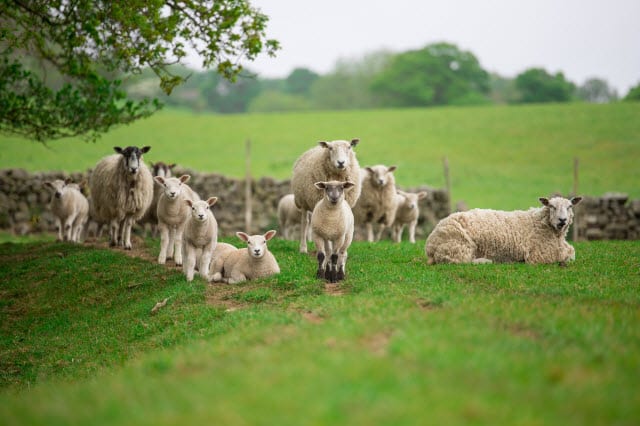
An ewe lamb will often start to experience puberty in the first fall after their birth. This is why ewes born in the spring usually experience puberty earlier than ewe lambs born in the fall. Lambs that are born earlier in the season get to puberty more quickly than ones born later on in the season due to body weight and age.
Giving an ewe lamb excellent feeding before and after weaning can lower the age at which an ewe will reach puberty.
A lamb born without siblings (also called a “single lamb”) tends to begin cycling earlier than ewe lambs born with one or two other siblings. This is a result of its size advantage (single lambs have access to more milk and tend to grow faster as a result).
If your ewe lambs are from a late-maturing medium-wool breed, a coarse wool breed, or a fine wool breed, it will probably reach puberty at a later time than other ewe lambs.
How the Presence of Rams Can Affect Ewes
The very presence of a ram can cause an ewe to go into estrus. Be aware of this if you want to prevent unplanned mating.
A ram that is still intact (even if it has had a vasectomy) being present around an ewe can have this effect, even if the ewe wouldn’t be expected to be in estrus otherwise.
When is the Ewe’s Natural Breeding Season
Sheep breeding season depends on day-length. Light exposure amount is key. Sheep are known as “short-day breeders.” This mans that the length of the day getting shorter triggers ewe estrous cycles.
Day length starts to shorten once the summer solstice is done. This is the reason why ewes have greater fertility during the fall, and why most lambs are born in the spring after the ewe’s gestation period is complete.
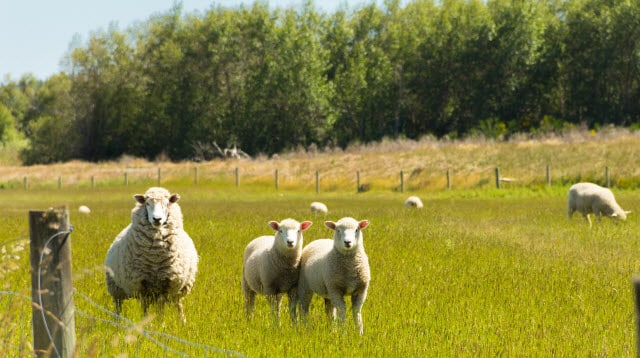
If you are accustomed to breeding horses, you know that this is very different than what you would find with horse breeding. In contrast to sheep, horses are “long-day breeders.” Cattle are different again, as they cycle throughout the year.
An ewe’s hormonal activity is split into three different periods:
- In one period, the ewe will cycle regularly and be in estrus (and therefore receptive to rams) and fertile, which is also referred to as the ovulatory period.
- Another period where the ewe will not cycle and isn’t fertile, which is called the anovulatory period.
- The period between the anovulatory and ovulatory periods, which is sometimes called the transition period. This is the time in which the ewe will not cycle yet her hormonal cycle keeps being primed for cycling by the days getting continually shorter.
- The time of ovulation is that at which the ovum (egg) is released from the ovary. After that, the egg could be fertilized by a ram.
Breeding Season Varies for Different Breeds of Sheep
Ewes of different breeds vary in terms of the length of their ovulatory periods.
Short Breeding Season Sheep
Some breeds that have natural fertility between September and January (also called short-breeding season breeds) include:
Long Breeding Season Sheep
Breeds where the ewes have natural fertility between July and March (also referred to as long-breeding season breeds) include:
- Dorset
- Rambouillet
- Canadian Arcott
- Romanov
- Rideau Arcott
- Katahdin
- Outaouais Arcott
- Ile de France
When Will Ewes Have an Estrus Cycle After Lambing
Let’s take a look at when ewes have an estrus cycle after delivering lambs and whether or not they have estrus cycles when nursing.
To begin with, it’s true that the lambing and lactation processes suppress an ewe’s estrous cycles. The postpartum anestrous phase continues for most ewes through lactation. This is despite the fact that the uterus usually goes back to normal size and function between two and three weeks after giving birth.
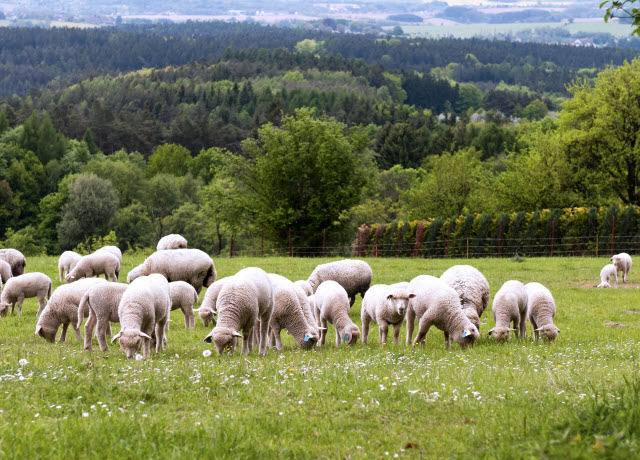
If your ewe lambs in the later winter or the spring, it will probably not go through estrus until the next breeding season. Ewes that give birth in the fall, however, generally show a fertile heat between one month or two months after lambing. This is about two weeks after weaning is done.
As a result some farmers who are interested in maximizing the number of lambs delivered per ewe each year may choose to raise a breed like dorsets, which could have lambs in the fall and be bred after those lambs are weaned to deliver spring lambs as well.
RELATED: How Many Ewes Per Ram During Breeding Season?
When to Separate Ram Lambs from Ewes
Use the knowledge you have gained here to determine when you should separate ram lambs from ewes and ewe lambs. Preventing unplanned mating and breeding is important on every farm. The most important factor to keep in mind is when rams reach sexual maturity and show secondary sex characteristics. After that point, you will likely have to separate them from the ewes.
On our farm we only had lambs born in the late winter and early spring. We separated all lambs from their mothers to wean them around 60 days of age. At about 4 months of age we separated the ram from the ewe lambs.

